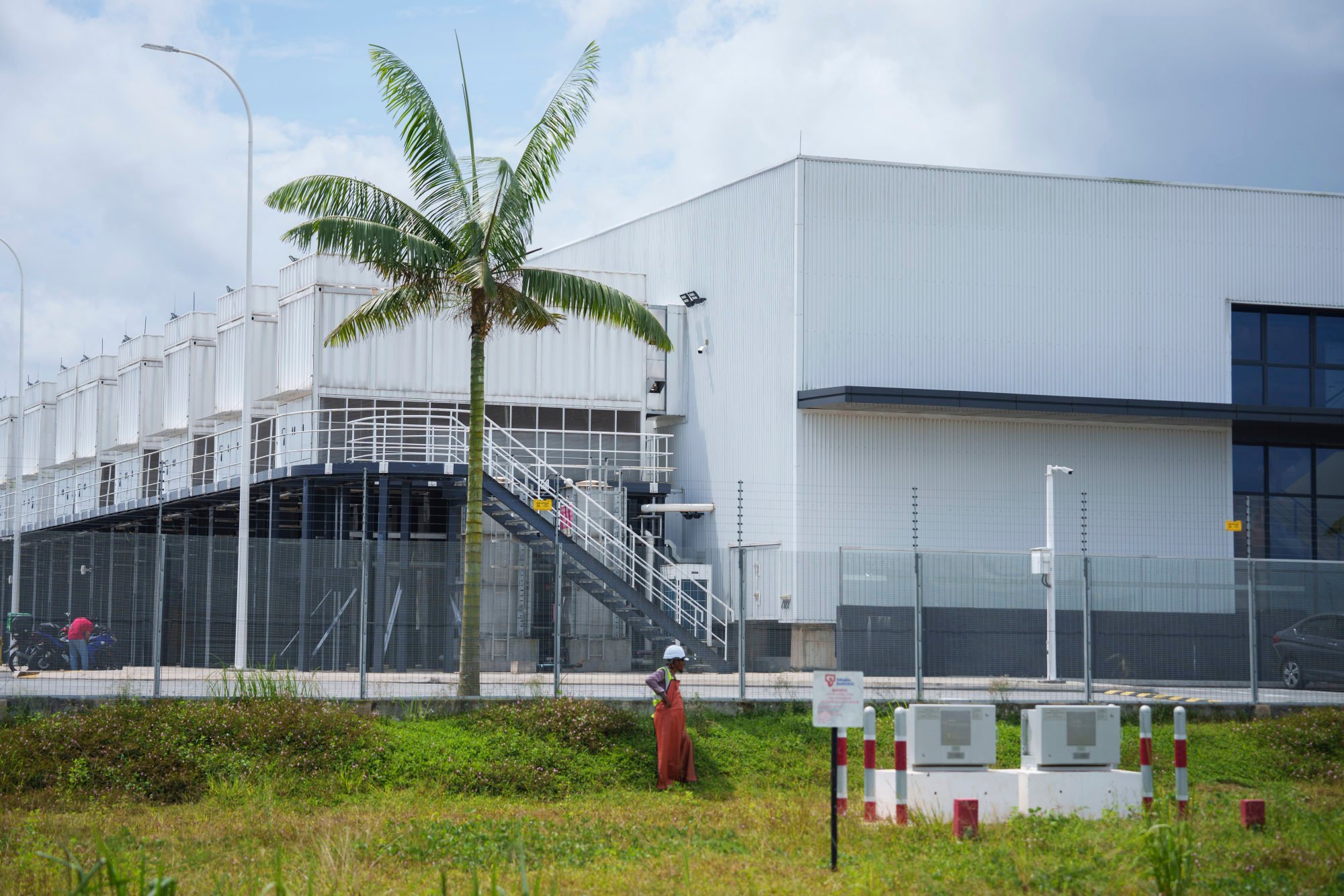China's tech giants are rushing to build data centres in Malaysia, which offers cheap energy and access to cutting-edge chips. — SCMP
Just off a narrow highway in rural Malaysia, a vast cluster of buildings flanked by rows of solar panels towers above the surrounding palm plantations.
The 275-acre (111-hectare) site, built by local conglomerate YTL Corporation, is filled with data centres to service an explosion in demand for processing power in the South-East Asian nation.
Malaysia is rapidly emerging as a key front in a global computing arms race, as Western and Chinese technology giants rush to build data centres to power their evolving artificial intelligence models.
By the end of 2025, global demand for computing power will have soared to 10 times the level seen in 2023, with more than 40% coming from Asia-Pacific, research firm IDC predicts.
Many of those extra servers are concentrated in Malaysia, as the country becomes a magnet for China’s tech companies.
For Chinese firms, Malaysia offers an enticing mix of advantages, including stable relations with China, low electricity costs, and greater access to cutting-edge semiconductors that are not available in China due to US export controls, analysts said.
“Chinese companies are the primary clients of data centres in Malaysia and other South-East Asian areas,” said Joe Gao, a board member of IBuffett Investment Management, an investment firm specialising in Chinese AI businesses targeting the Southeast Asian market.
Computing hubs have mushroomed across Malaysia over the past few years. As of 2024, the country supported 54 data centres with a total capacity of 504.9 megawatts, nearly double the capacity in 2021, according to Malaysian tech trade association PIKOM.
And that capacity will more than double again once YTL’s enormous new facility opens. The sprawling data centre park will eventually have a capacity of 605 megawatts, YTL told the Post, with an early phase of the project set to come online in May.
“We knew by the time this AI revolution came around, data centres would really take off,” said Yeoh Keong Hann, a senior executive at YTL, during an interview at the company’s sleek high-rise headquarters in Kuala Lumpur.
“Malaysia was in that lucky position where it had the energy, water, land and human talent to spark this new area of growth.”
Malaysia has gradually edged out neighbouring Singapore as the region’s go-to destination for new data centres over the past few years.
An early mover in the sector, Singapore eventually found the facilities placed too great a strain on its scarce land, water and energy resources. In 2019, the city state placed a moratorium on new data centre projects while it figured out how to fit the industry into its climate goals.
But Malaysia embraced the industry, and it quickly began to attract investment from Chinese tech companies targeting South-East Asia’s fast-growing market.

In the late 2010s, Alibaba Cloud – a division of Chinese tech giant Alibaba Group Holding – opened a data centre in Malaysia to serve local companies using its cloud computing services. Alibaba is the owner of the South China Morning Post.
ByteDance, the Beijing-based internet services company that owns TikTok, co-launched the first phase of a data centre complex in the southern Malaysian state of Johor in 2022, which fills three buildings spread over more than 15 hectares.
Today, tens of thousands of Chinese companies are using data centres in Malaysia, according to Gao.
In many cases, these Chinese firms are investing in offshore facilities to store data generated by their overseas social media, short video platforms and e-commerce businesses.
For example, a slew of Chinese players have jumped into South-East Asia’s e-commerce market – which is projected to double in size by 2030 – including Pinduoduo’s Temu, Alibaba’s Lazada, and ByteDance’s TikTok Shop.
According to Yeoh, YTL expects its data centre park to attract a lot of clients that want to “lump South-East Asian demand together”.
But the real game-changer has been the rise of generative AI, which has sparked a dramatic surge in demand for data facilities.
Chinese companies are now mainly looking to invest in data centres to train AI models and store the data generated by their AI systems, according to Alex Liew, chairman of the Malaysian tech trade association PIKOM.
“AI is very big in China,” Liew said. “It attracts a lot of Chinese companies.”
For China’s AI companies, Malaysia’s attraction lies partly in its low costs: data centres are 30% cheaper to run here than in Singapore, according to Liew. But another major advantage is the country’s access to US-designed microchips.
“Malaysia remains a legal destination for procuring high-end chips,” Gao said. “Despite certain quantity restrictions, Chinese companies can still access computing power resources through local channels to support AI model training, smart manufacturing and the Internet of Things.”
There is huge potential for further growth in computing power demand in South-East Asia, Gao added, as the AI industry continues to develop and other emerging sectors including smart home devices, drones, autonomous driving and electric vehicles take off in the region.
Yet, this boom in Chinese demand also carries risks for Malaysia. Foremost among them is geopolitical uncertainty – the possibility that Malaysia could get caught in the crossfire of the US-China tech war.
“The US could enforce stricter ‘know your customer’ regulations, requiring data centre clients to register with real identities and disclose ultimate beneficial ownership, or even restrict South-East Asian data centres from providing computing power for Chinese AI models,” Gao said.
If that happens, it could severely affect the ability of Malaysia’s crop of new data centres to generate a profit.
“The domestic markets of Malaysia, Vietnam and Thailand still have limited demand for such big high-end computing power investment, making Chinese enterprises a crucial customer base for South-East Asian data centres,” Gao said.
But as more South-East Asian data centres adopt Chinese-manufactured chips, the impact of US export controls will gradually weaken, according to Gao.
“This is not just a trend – it represents tangible economic benefits,” he said.
Meanwhile, the boom is causing environmental issues that could be challenging to overcome.
What stalled Singapore already shows signs of spreading into Malaysia: Johor has begun rejecting some data centre applications, citing the drain the projects would put on the region’s resources.
Data storage could eventually cause problems unless the facilities are powered by renewable energy, said Farlina Said, a senior analyst at the Institute of Strategic & International Studies think tank in Malaysia. The country has set a target to cut its greenhouse gas emissions by 2030.
“It’s something Malaysia wants, but at the same time some people are questioning whether our resources are at a good place to host these data centres,” she said.
While Malaysia has plenty of water to help cool high-density data centres, the country is far from ideally suited to hosting these facilities, Liew said.
“The challenge with Malaysia is our weather,” he said. “It’s always warm. It’s not like some countries that use wind cooling. Water is our only option.” – South China Morning Post





